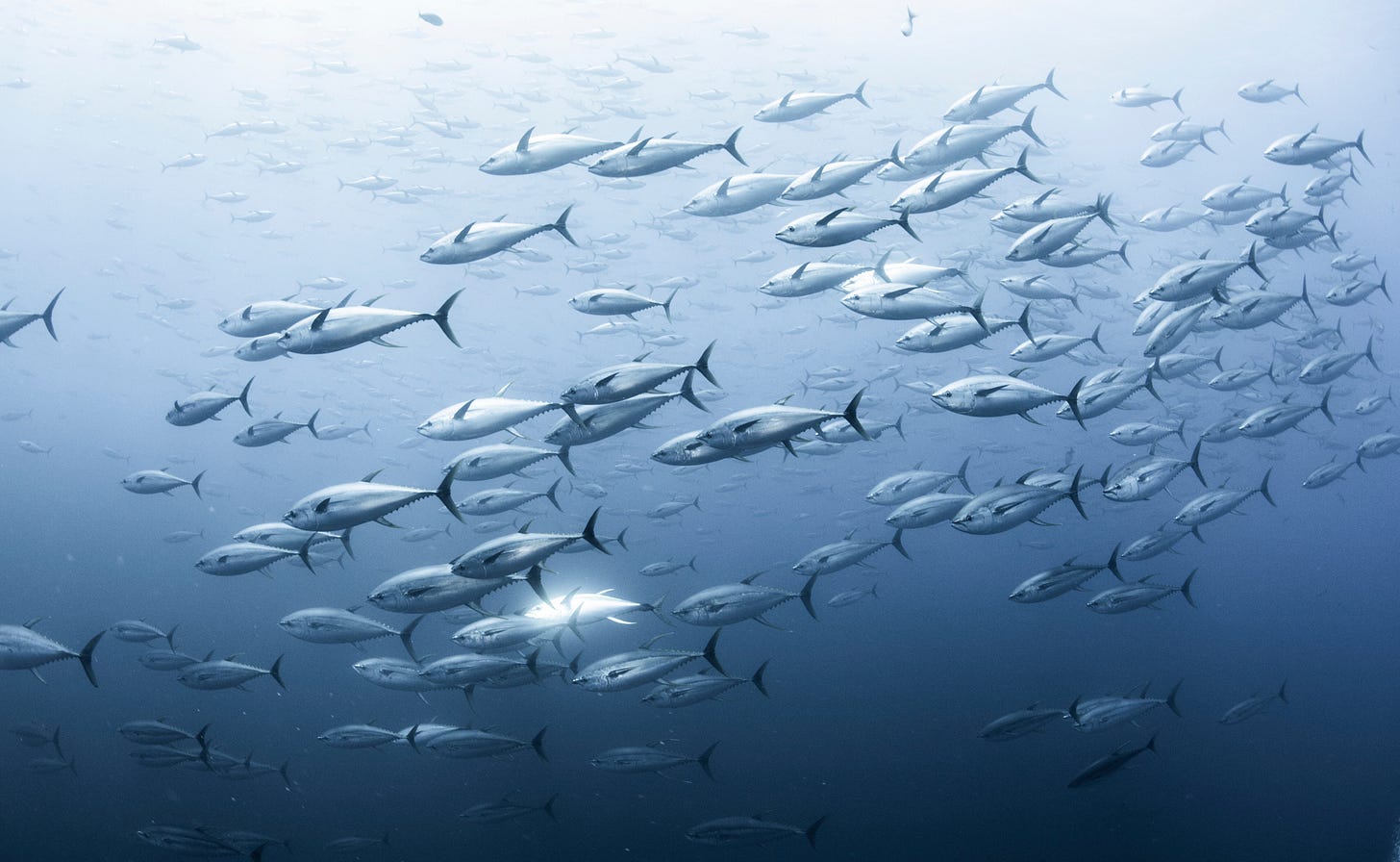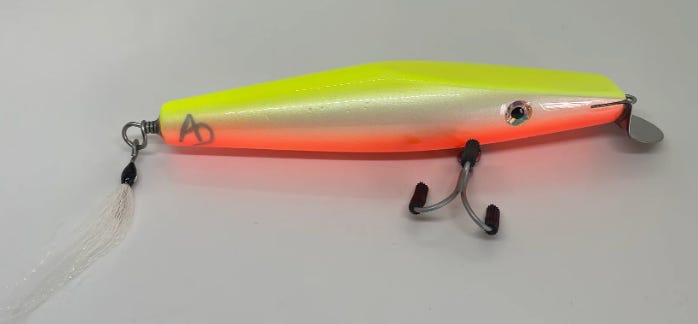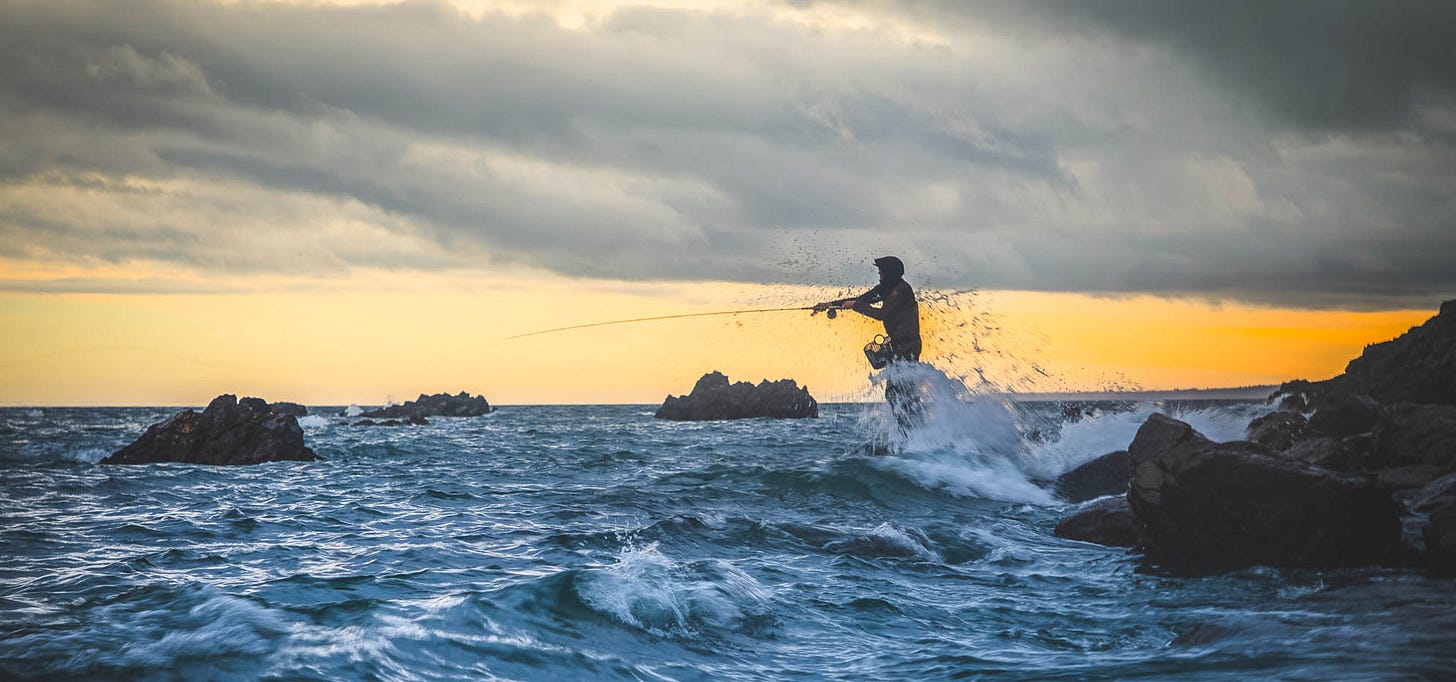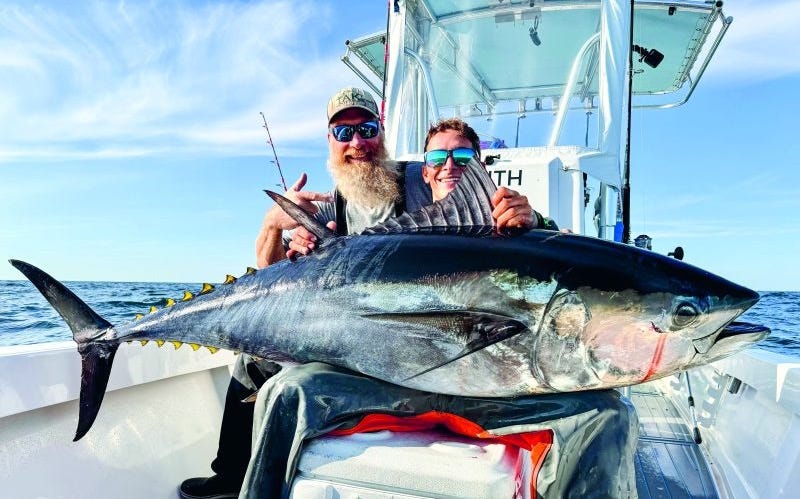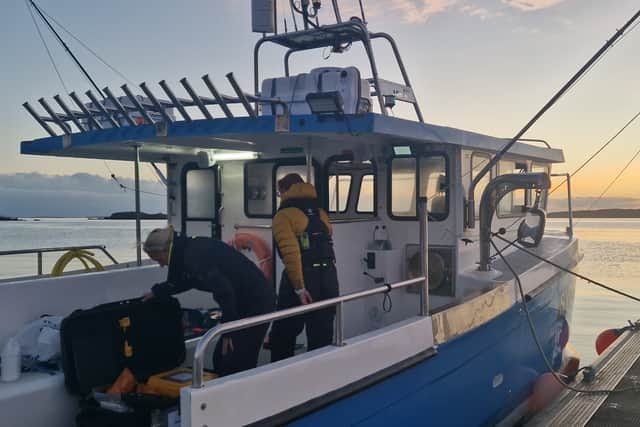The maritime rule of salvage has its origin in Roman law, which dictates that one who preserves or improves upon the misplaced property of another is owed compensation, even if the service was not requested. Let’s get out the internet trawler and get to work…
🎙️| Mill House Pod: The Straight Shooter - Eric Herstedt —> The Everglades & Keys guide talks versatility and passion, two of the most important character traits for guiding all-season long in Florida’s competitive saltwater scene.
🎥 | All-Season Bunker & Bass Tactics with Brian Kelly
Fishing Reports | OnTheWater - FishermanMag - HullTruth - SOL
Renew your HMS vessel permits here.***
Gear Guide by Tak Waterman | Maine Fishing Co. Jr. Troller
Description | This 3oz 7” Troller dives to 6'-8’, making it a nice ‘utility plug’ in scenarios when fishing slow to medium current in shallower boulder fields or when fish are suspending around bunker pods. Trollers more broadly are known for producing the displacement, flash, and vibration that mimics large injured baitfish at a distance, especially in off-colored water.
Morning Prayer
By John Sargent
Early dawn, gray light on bramble.
Salt so thick I can taste it.
Cresting the bluff, my altar rises into view.
Rolling water, tongues of foam.
The first cast is caught by wind,
swallowed by air
before the plug slashes the white water.
Behind it, a fleet of mouths.
The water blossoms once,
and my rod bows in thanks
as another prayer is dragged out to sea.
*For any other authors wishing to submit their work to be featured, pls DM @BlowinWeGoin
The Bluefin Tuna Calendar (OnTheWater) - “As water temperatures continue to climb throughout May, Captain Albohn recommends paying close attention to the movements of the commercial fishing fleet. This is where having a good network of captains and fellow recreational anglers comes into play. ‘We’ll set up a plan with a few other boats to cover large swaths of water and head out toward the temperature breaks, making huge loops while keeping an eye on the commercial boats,’ he noted. Giant bluefin are clever enough to follow the draggers for easy meals, and by covering a vast area with a system of buddy boats, Albohn can better pinpoint where those bluefin are likely to feed.”
—> While it would appear the recent nor’ easter has put a bit of a damper on tuna-tivities down the east coast the last week or so, there’s no time like the present to prepare for the fast approaching season opener (June 1). We reached out to a few sharp pencils spanning New York - New Jersey and pulled together some intel from the last know whereabouts of Charlie.
“The tuna we have found here in Jersey and off New York have been migrating in big packs. We noticed large schools of fish milling the surface and pushing water. They are unresponsive to lures at most times and trust me, we have tried all variations. It seems you have to locate a school under white birds that are actively feeding for the bite. The fish we have got all have very small bait in them. Tiny squid, krill and small sandeels are all things we have found in our fish so far. It honestly seems that they are cruising through and haven’t choose a spot to really set up yet. A lot of milage has been covered.” - Billy Hayes
“Early-season Bluefin have proven to be the hardest fish to dial in, as they can be found in 48° water 5-miles off the beach or 80-miles off on a temp break—and pretty much anywhere in between. That has meant running 150-250 miles almost every trip so far. This first body of fish were the ‘dream size’ from about 65-85” and very very mean. I had a 80” class fish that fought harder than any 100”+ fish I’ve ever hooked. As Billy said, they were being very finicky, eating small bait on the surface and not really reacting to anything you casted at them unless they went into a rage feed. That being said, once they got going, we got bites on small and big soft plastics, poppers and floating/sinking stickbaits. It proved to me that your presentation doesn’t really matter on these fish and it’s more about just consistently putting it in front of the fish’s face and giving yourself an opportunity to get the bite.” - James Kuhl
“Locally on the south shore of Long Island, we have seen bluefins from 60"-70" class pushing sandeels to the surface in quick ‘all out’ feeds that last only 10-30 seconds. Enough time to fire off a cast or two and then they are gone and onto the "run and gun" style search again. We are targeting these fish with smaller sized plugs with beefed up hardware as well soft plastics. As the new moon approached (just passed on Memorial day) these bluefin have seemed to have migrated onward to the north. We will be running again this week to locate the next wave of migrating fish. Keep em tight!” - Will King
Rare tuna fishing license given to Scottish boat with eyes on Tokyo market (Scotsman) - “A skipper from a Scottish island is one of a select few in the UK to have been granted a license for tuna fishing. Angus Campbell, from Harris, is one of 15 fishers to be issued a commercial licence to catch bluefin tuna, which are showing a “heartening resurgence”, according to the Marine Conservation Society. “We have been saying for years that there is potential for a well-managed tuna fishery in the Outer Hebrides which could have a real economic impact. This is an important step towards that and the fact that landings can take place at Leverburgh as well as Stornoway is a really significant development”, he added.”
Shad Spawn Bass Fishing 101 with David Walker (SportsIllustrated) - A” shad-spawn bite can be epic. Some of those early-morning bass hit “with a vengeance,” knocking slack in his line, Walker says. But even the most epic shad-spawn frenzy won’t usually last all morning – let alone all day – he cautions. “When them shad quit, the fish are still hanging around, but they're a lot harder to catch,” says Walker, a Tennessee native. “They just slow down. … They get sick of you. They quit buying what you’re selling.”
South Florida Sailfishing: Ditch the Phone, Read the Water (InTheBite) - “South Florida is known as ground zero for catching sailfish. Over the years, sailfishing techniques have evolved dramatically—especially with the rise of technology and social media. While we once relied on radio chatter and dock talk, today’s anglers often scroll for updates and follow influencers to plan their day. South Florida sailfishing today demands a blend of old-school wisdom and new-school resources. Next time you’re offshore, consider leaving your phone in your pocket. Read the signs, trust your instincts, and take your place among the pros.”
Looking for more information about a product after reading The Weekly Salvage?
Try using GearSay, the first generative AI tool specifically tailored to help you find the right fishing tackle.
Thanks for reading The Weekly Salvage, until next week!
Have feedback or want to learn more?
Reach out to us on IG @Blowin_We_Goin



